#kirikou
Text

@ariel-seagull-wings @themousefromfantasyland It remains fascinating to me that, in the US, the film Kirikou and the Sorceress is kinda obscure and only available in a blurry print and old non-anamorphic DVDs while in other countries it's just... a children's film? Like, a restoration was on the Criterion Channel for a few months some years ago, but that's been gone for ages now.

It's because of the completely nonsexual animated nudity that's so matter-of-fact within the film and normal among the culture it portrays that it becomes irrelevant. And some people might say, "Well, if it's irrelevant then they could have just censored it for the US release," but like... that would have been a loss to the film.
Like, it's all very well for people to say things like "Nudity in and of itself is nonsexual" but having a film where the nudity is so mundane you might even forget about it (or at least be forced to confront your own cultural biases regarding nudity) shows that.
This is the way these people live. It is ordinary. The film doesn't try to otherize its characters because of it.
It just is.
And that makes it integral to the film.
I only saw the film for the first time when it appeared on the Criterion Channel, but I feel like if I'd grown up with it (there would have been no chance of that; my family would have confiscated the DVD), I'd have had a less complicated emotional journey regarding my body.
56 notes
·
View notes
Text
Fairytales in French cinema
Pictures from "Kirikou et la Sorcière" (Kirikou and the Witch/Sorceress) by Michel Ocelot.
The mid-20th century was marked by Cocteau's Beauty and the Beast... Jacques Demy's Donkeyskin left its print on the latter half of the 20th century... And Michel Ocelot's Kirikou burst out of the dawn of the 21st century. As I said before, this movie could be compared in term of scope, effect and popularity, to what The Lion King was in America... (except this movie's better :p)
Adapting a West African folktale while sharing modern messages about issues such as the power of tyrants or the nature of discrimination, using all sorts of traditional African artstyles for its design ranging from Ancient Egypt to the Benin, this movie enormous success (it even was adapted as a world-renowned live-action musical) completely redefined the animation industry in France in the early 21st century.
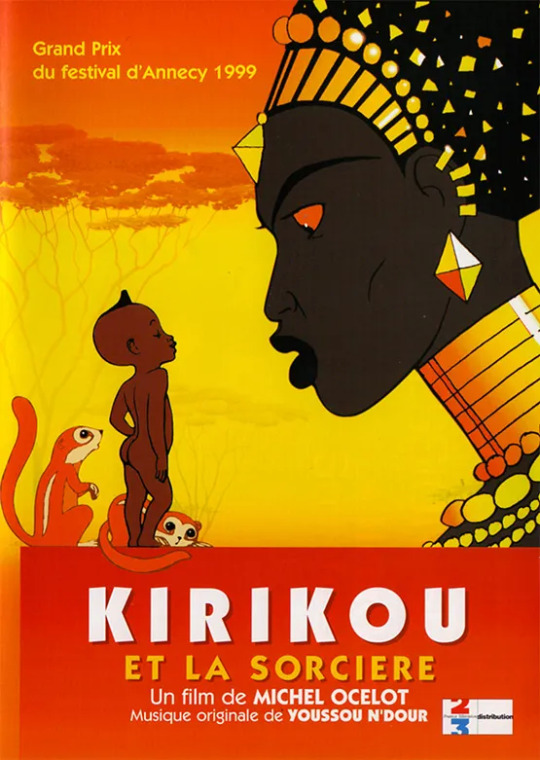


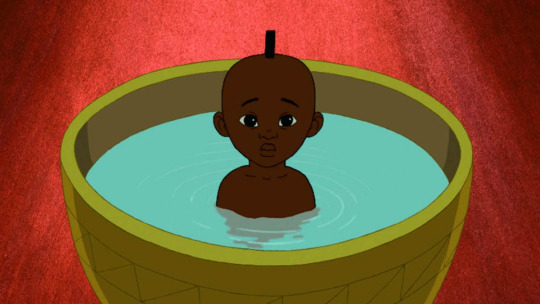
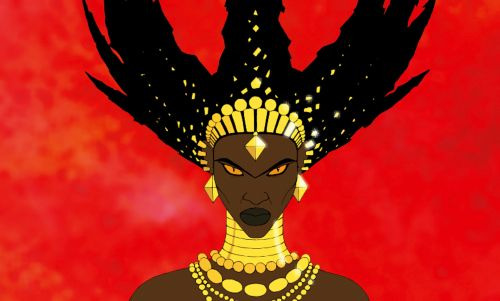

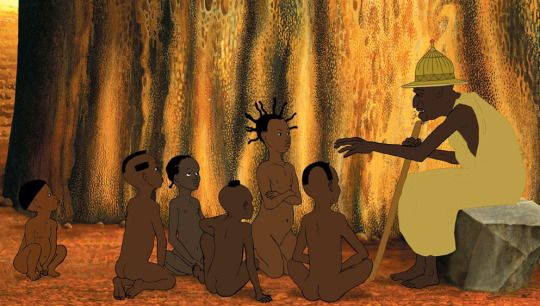



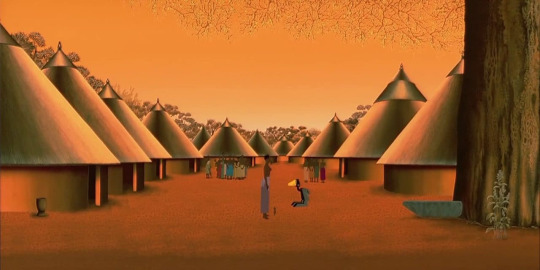
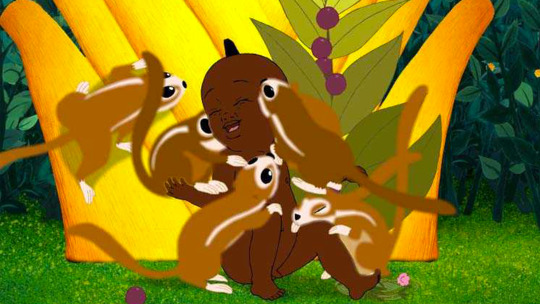

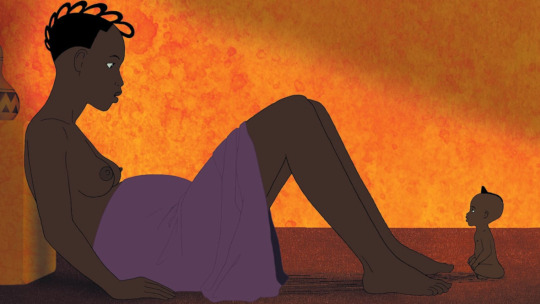
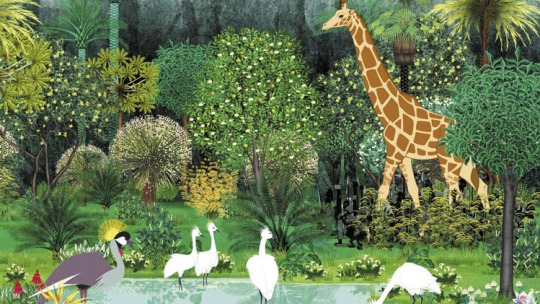
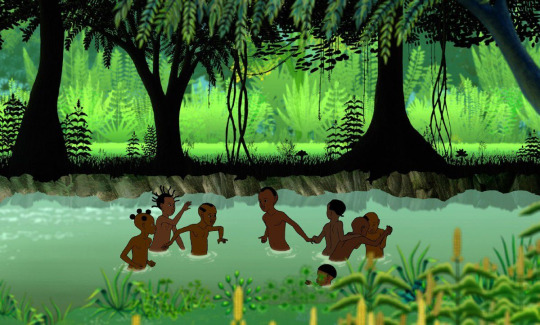







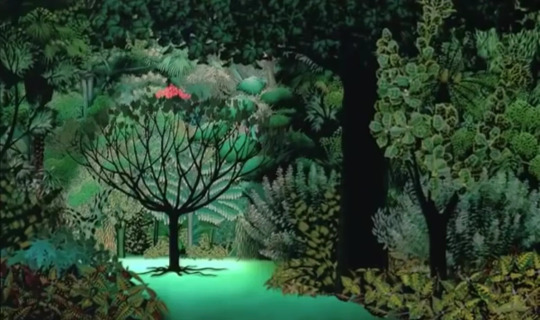
#kirikou#fairytale movie#kirikou and the sorceress#french movie#kirikou and the witch#animated movie#michel ocelot#african folktales#west african folktales
27 notes
·
View notes
Text
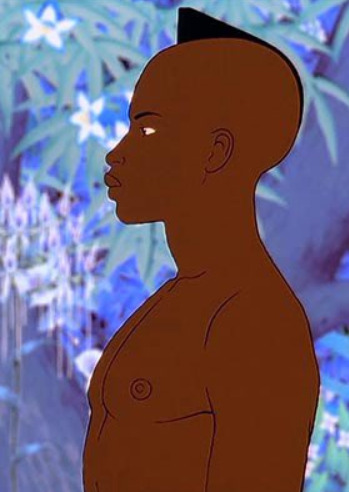
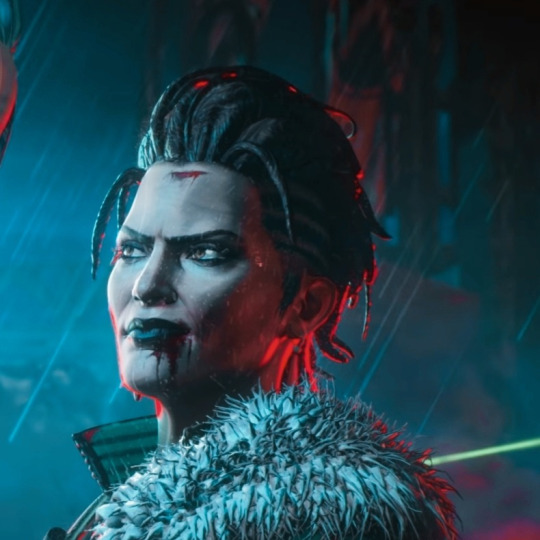
Kirikou is canonically Indigenous. He is from a small West African village, and the story pulls from West African cultures, specifically Senegalese and Guinean.
Margaret Kōhere/Mad Maggie is canonically Māori. She is either Ngāruahine or Ngāti Ruanui.
#indigenous character tournament#ict round 2#tournament poll#kirikou and the sorceress#kirikou et la sorcière#kirikou#apex legends#margaret kōhere#mad maggie
44 notes
·
View notes
Text



Azur et Asmar - Michel Ocelot (2006)
#azur et asmar#michel ocelot#djinn#animation#3D#3D Animation#kirikou#kirikou and the sorceress#kirikou et la sorcière
6 notes
·
View notes
Photo
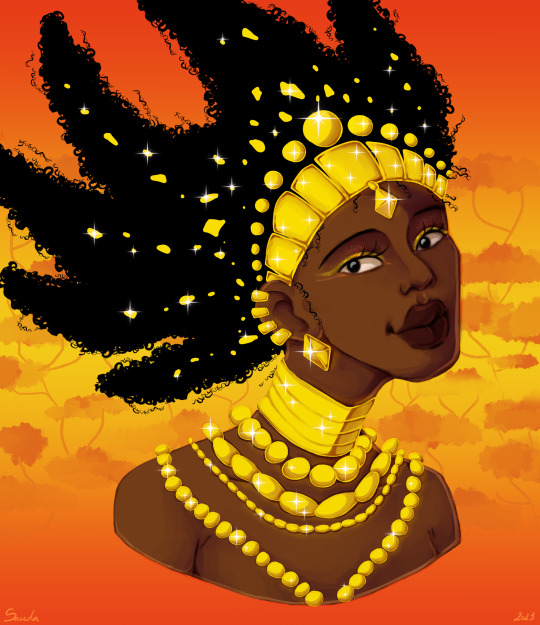
Karaba, Kirikou et la Sorcière
41 notes
·
View notes
Text
seriously tho, the fact that it’s specifically explained that Karaba the sorceress became evil not because of who she fundamentally is as a person but because of the violence men inflicted on her and the long lasting pain it caused her AND the fact that Kirikou’s way to access to adulthood/manhood is not to kill/defeat her but to heal her pain and allow her to find peace again...this movie was truly so advanced in so many ways..
#i also like the fact that she supposedly get her powers from the thorn but it's strongly imply that she still have some power...#even after it gets removed from her back#implying that no her power didn't just came from her trauma and yes she can be both powerful and happy#also the fact that in the original myth the mom disapear from the story immediately after giving birth to her son#while here she's an active ally and kirikou couldn't have done all he did without her help#this movie is truly everything to me and always will be#kirikou
41 notes
·
View notes
Text

"I'll decorate you"
I rewatched Kirikou & Karaba the Musical and felt an urge to draw one of my favourite scenes.
#kirikou and the sorceress#kirikou#kirikou et la sorcière#kirikou et les bêtes sauvages#digital art#digital artist#digital fanart
43 notes
·
View notes
Text
Magical summer: Karaba
KARABA
Category: French children media / Fairytales of Western Africa
Michel Ocelot is one of the most famous French movie makers, specialized in animated movies for children. And he mostly got his fame through “Kirikou and the Witch”, an international success made by a Franco-Belgian-Luxemburg collaboration, but which found fame as far as the United-States. It was such a big success that it basically proved to everyone that a French animated movie could be a big thing oversea, and it even got adapted as a musical! Released in 1998, this animated movie was inspired by various folktales of Western Africa, and follows the adventures of the boy of the title, “Kirikou”. Born in a Western African village during a “mythical” time, Kirikou is a VERY unusual boy. He became able to talk when he was still in the belly of his mother, as soon as he was birthed he could walk, he is a very clever and cunning child, but he is also extremely small, small enough to sit in the palm of the hand of adults. As soon as he is born, he discovers that his village is under the terrible rule of a wicked witch named Karaba, and thus starts a conflict between the heroic little boy and the dreadful monster of a woman that is Karaba…
At the beginning of the story, Kirikou learns of the poor state of his village. The people are poor due to Karaba the witch regularly taking away their riches ; they have barely enough water for everyone because she dried up the village’s spring and so everyone has to take water from a far-away backwater ; and finally, the village doesn’t have any adult men in it anymore because they all tried to fight Karaba, and they all were eaten by her. Beyond an elderly man who acts as the patriarch of the community, there is only one other man, Kirikou’s own uncle, who leaves the village to go to Karaba’s house, in hope of vanquishing her. Kirikou forces his help on his uncle: he hides under the hat of his uncle in order to give him advices during his confrontation. Karaba turns out to be a beautiful but terrible woman who is served by an army of sentient fetish-statues. [Note: While the Internet turned “fetish” into an unpleasant term, originally a “fetish” was a sacred or magical statue of carved wood in African religions and rituals, destined to be inhabited by spirits or gods. Karaba has a very dark interpretation of the fetish-statues, as they are creepy-looking sentient statues acting like robots]. Thanks to Kirikou hiding in the hat and speaking to his uncle, Karaba believes the object is magical and she bargains with the warrior: she promises to leave the village alone in exchange of the “talking hat”. However, Kirikou escapes back with his uncle, and when Karaba discovers she was tricked her wrath is terrible.
As a revenge, she sends her fetish-statues to the village to order that all the women give her the last of their jewels and riches, truly depriving the community of their last precious things. (Karaba is a witch covered in jewels, and who apparently greatly love gold) One woman tries to hide a few jewels… but the statues search every house, and upon finding the hidden jewels, they burn the woman’s house. The fire can’t be put down because the village has no water. Later, Kirikou goes with the children of the village to the far-away backwater, and there Karaba tries to kidnap them twice. First she sends a beautiful pirogue, which turns out to be magical and take whoever enters it to Karaba’s house ; the second time she sends a beautiful, moving tree which ensnares in its branches all the kids that pass nearby before returning to Karaba’s house. But the two times Kirikou saves the children.
Realizing that the spring of the village being dried up causes a LOT of problems, Kirikou decides to solve the situation. Using his small size to enter the cliff from which the spring used to come from, he discovers that the “curse” of Karaba is actually a giant monster that drinks up all the water. Kirikou manages to kill it, and the spring flows once more.
Now, Kirikou has one specific character traits: he is a very curious boy, constantly asking questions. When he was born he just kept asking questions, such as where all the men where, or why the spring was dried up, and every time the answer was “Karaba”. But one of his questions never was answered: “Why is Karaba wicked?”. To that, no one can give him an answer… But his mother knows the only one who can tell Kirikou the answer he seeks. It is the “The Wise Man of the Mountain”, who happens to be Kirikou’s own grandfather – but he lives in the “Forbidden Mountain”, called as such because Karaba forbids anyone from going near it. The mountain is just behind Karaba’s house, and she has a “watcher statue” on her rooftop that keeps a constant surveillance. However Kirikou manages to sneak past Karaba’s house by using underground tunnels, and after many adventures he reaches the magical domain of the Wise Man of the Mountain, who answers all of Kirikou’s questions.
SPOILERS AHEAD!!!
You see, at this point we reach the last act of the movie. We reach the climax, the secrets revealed, the answer to all questions, so if you want to watch the movie by yourself I suggest you don’t go further.
SPOILERS ALERT! SPOILERS ALERT!
SPOILERS BEGIN HERE:
The Wise Man in the Mountain, who knows everything and holds all truths, reveals that if Karaba forbids anyone from reaching him, it is because she uses ignorance and lack of knowledge as her weapon: it is how she instills fear in the heart of people. Because Karaba is actually a very intelligent and cunning woman. She is a powerful magic-user, that is true, but she is actually less powerful than the villagers think. For example, the idea that she devoured all the men that tried to fight her? It is a lie. Karaba is not an ogress nor a cannibal. But she did defeat all the men in the village: she turned them into the fetish statues that serve her faithfully. As for the dried-up spring, it actually never was her doing. The monster inside the spring is just a random beast that dried up the spring by being too gluttonous, it was never sent by Karaba. But she took credit for it and pretended to have cursed the spring. Again, she needs people to fear her, and she manipulates them into believing her to be an all-powerful monster.
As for why Karaba is wicked, the answer is actually quite tragic. As the Wise Man reveals, Karaba once was a kind woman. But, as he stressed out, she was intelligent and powerful… And the men of the community she came from did not like women intelligent or powerful. They feared her, hated her, and one day they decided to “punish” her for being better than them: they took a poisonous thorn and plunged it in her back. It was located in a place where she couldn’t take it off herself, and the constant pain it caused her turned her wicked and made her powers evil. As the Wise Man reveals, if one were to take off the thorn that torments Karaba, she would be good again and all her curses would break.
This is the last mission of Kirikou: to save Karaba the witch from her own evilness. He sneaks into her house by underground tunnels, steals all the jewels she took away from the village, and hid them (quite clumsily) in the forest, all while leaving obvious traces of his passage. Karaba, enraged and determined to kill once for all Kirikou, sends a poisonous viper to kill him, but the miniature boy tricks the beast. So Karaba takes a poisonous spear and goes out to find her jewels and kill Kirikou herself. But as she digs in the earth to find back the hidden jewels, Kirikou jumps on her back and removes the thorn. This stops the constant pain of Karaba, she returns to being a kind and gentle woman, and all of her curses and evil magic as undone.
Kirikou then returns with Karaba and all the men (now free from the fetish spell) to the village, where they are welcomed – and it is a happy ending.
- - -
As you can see by the ending of the story, "Kirikou and the Witch" isn't just a retelling of traditional fairytales. It is also a deep movie that sneaks important issues and topic in a way children can understand. It speaks of the dark power of ignorance, of the importance of curiosity and knowledge, and it deconstructs the archetype of the wicked witch by highlighting the oppression and abuse women did suffer from. This is why this movie was so beloved, appreciated by adults and children together, with many people reinterpreting it in many different ways.
The movie was such a success the studios kept asking for sequels, but Michel Ocelot at first refused. He had conceived a full story, with a beginning and an end, it was a complete tale and he couldn't stretch it further. However he did create few stories that actually take place during the movie's stories - tales of past victories of Kirikou against Karaba, or of various heroic feats he did for the village. At first they were just children books, but they quickly were turned into a sequel (well "sidequel") movie, "Kirikou and the Wild Beasts". Finally the Kirikou movie were closed by a third film making it a complete trilogy, another sidequel called "Kirikou and the Men and Women", released in 2012.
16 notes
·
View notes
Text
To me it is not a coincidence that the world economy started to fall off and democracy started to be dissolved when we stopped making Kirikou movies
19 notes
·
View notes
Text


Are
8 notes
·
View notes
Text
Alors certes, j’ai gagné plein de films cools sur Netflix en déménageant en Colombie (Dracula, Raisons et Sentiments, etc...) MAIS j’ai perdu les Kirikou (enfin tous les films de Michel Ocelot mais je crois que y’avait que les Kirikou) avant même d’avoir pu les revoir et ça - ça, ça fait mal 😭😭
#je suis désespoir#je peux pas partager ce monument de notre culture aux colombien.ne.s#enfin moins facilement quoi#ça vaut pas le coup de regarder des adaptations de Jane Austen si je peux pas aussi partager ''Kirikou est petit mais c'est mon ami''#pia's oversharing#kirikou#michel ocelot
3 notes
·
View notes
Video
youtube
FILM KIRIKOU PARTI 2 : FRANCISCO PLUS QUE BOLINGO
#youtube#kirikou et les bêtes sauvages#francisco plus que bolingo#francisco que bolingo#kirikou et les betes sauvages#kirikou
4 notes
·
View notes
Text
A lil test of mine is introducing a person to Kirikou and see how they react. More often than not, they are super childish about it.
0 notes
Text


Prince Ashitaka is canonically Emishi.
Kirikou is canonically Indigenous. He is from a small West African village, and the story pulls from West African cultures, specifically Senegalese and Guinean.
#indigenous character tournament#tournament poll#ict round 3#princess mononoke#mononoke hime#prince ashitaka#ashitaka#kirikou et la sorcière#kirikou and the sorceress#kirikou
17 notes
·
View notes
Text
youtube
Youssou N'dour song from the soundtrack of the animated movie Kirikou.
0 notes
Text


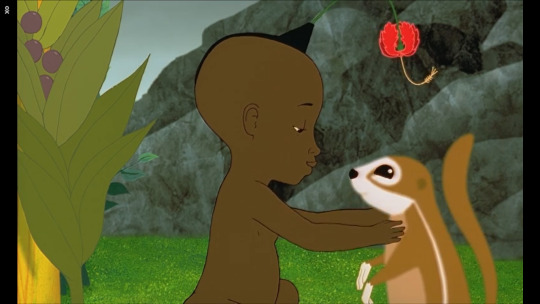
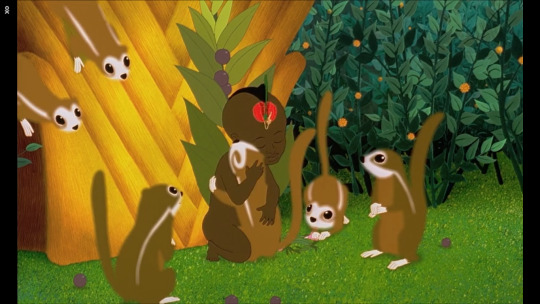
this movie really said “you’re gonna be afraid to connect with people and unfortunately that fear is not fully unfounded because some people will want to hurt you for no reason but connection to others will also bring you more joy and hapiness than you could ever imagine so the chance of pain will always be worth it” and it truly amazes me
#no i didnt got all that form kirikou hugging a squirrel but tbh the scene kinda just tie it all up together#like the mother squirrel is initially showed angry at kirikou because she's afraid of him..just like karaka's is angry because she's hurt#and how the villagers are angry at karaka because they're afraid of her#idk man this movie just blow my goddamn mind tbh#also look at his little flower :')#kirikou#kirikou and the sorceress#also yes i left the ugly border on the side of the images this is not gonna get more than 3 notes at most leave me alone
53 notes
·
View notes